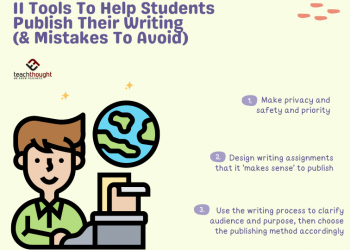by Judy Willis M.D., M.Ed., radteach.com & Terry Heick
Most teachers and current textbooks offer varied approaches to the material to be learned so the teaching can be brain-compatible with the varied student learning styles.
It is only logical that respect for these individual learning styles be incorporated into assessment forms and out-of-the-box assessment strategies teachers should know and use when appropriate. For example, teachers responsive to interpersonal learning styles find cooperative group work a way to pull in those learners as well to give students with artistic, computer, dramatic, or organizational skills the opportunities to enter the learning experience through their strengths and interests
It follows that assessments should also provide opportunities for each student’s unique learning style to access his or her highest performance success level. A variety of assessment forms and some student choice can bring students to the assessment with less anxiety and increase the positive learning experience as well as provide the opportunity for them to demonstrate what they know (as opposed to what they don’t know).
Examples include:
Option 1: Open-Book & Take-Home Tests
This one is fairly straightforward–allowing students to use resources to create responses to assessment questions. For obvious reasons, many teachers shy away from open-book tests: The answers are all ‘right there’ in the book and it can seem to teach students to use books instead of their brains.
However, open-book tests can function as a powerful scaffold for more challenging assessment forms, providing a starting point for assessment of standard mastery (i.e., what they can do with the ‘answers’ at their fingertips).
See also Types Of Assessment Of Learning
More importantly, it can allow for higher-level assessment. Books and other digital resources at home give them access to lower-level information (stuff they can Google or ask a friend), but not the higher-level thinking that requires them to synthesize disparate facts and perspectives to construct new knowledge.
This is where the shift of assessment of learning to assessment for learning can begin.
Option 2: Student-Made Tests
These are assessments that they prepare and the teacher can alter them so the answers are not just memorized. For example, in history after studying the different agricultural products in the northern and southern colonies, the self-test questions a student writes might be:
- What were the crops from the colonies in the north and from the south?
- How are the climates, land, and water supply different in one northern city and one southern city?
- When the teacher rewrites the question it could prompt more analysis and executive function connections if it is rephrased: “Give an example of how the climate, water supply, and soil influenced the agricultural products in one northern and one southern city during the Colonial Era.” In this example, the teacher knows that the student has reviewed the facts necessary to make the higher-level connection and analysis and therefore has the tools for successful higher-level thinking.
How My Students Create And Study For Their Own Exams
This is the process I use for student-created math final exams in my classroom. Your process may differ depending on grade level, content area, or other local concerns.
- I give the structure for the tests students are required to create such as, “Include 15 calculations and 5-word problems with 2 from each of the 10 subsections of the chapter”
- I make a copy of each test and change the numbers, but not the structure of the equations. They knew I would do this and that the numbers will be different than the ones they used
- Students are assigned homework to make practice tests on their own, using the template of the test they created and changing the numbers themselves
- In class, for further review, students exchange their practice tests with partners for study and to the confirm accuracy of their answers (as I don’t have an answer key to all of their self-created tests)
Option 3: Project-Based Learning!
Projects (pre-approved by the teacher) that demonstrate comprehension or mastery of the material covered in the unit can be ideal assessments.
They can become the packaging that connects the newly learned patterns of knowledge to related, previously stored knowledge. To see if the project assessment achieves this end, consider the questions:
- Does this assessment examine understanding and not just rote memory?
- Is the student called upon to think during the creation of the project?
These projects can include skits, posters, oral presentations, debates, papers, or demonstrations that assess understanding apart from rote knowledge. For some units, the projects can be done in pairs or groups, as long as there is a means of assessing each individual student’s participation in the final product. This could be through verbal interviews with students individually after the completion or presentation of the project.
See also The Real Problem With Multiple-Choice Questions
A project example for a unit of study of modern Europe would have students select a country and simulate travel to that country including finding out how to get passports and visas, what the passport oath is, what clothing to bring, what hotels are near the important historic or cultural places they plan to visit, the money exchange rate, a budget, location of cities to visit along their travel route through their country, useful phrases to know in that language, cultural behaviors appropriate to that country, items they might expect to find on menus.
They might also create a menu, a travelogue, cook a meal, or prepare a ‘scrapbook’ with pictures from the Internet and descriptions of their responses to ‘visits’ they made to these places.
If standardized testing is of critical importance, each unit can include a test using the form they will experience during state testing. However, letting them know that their grade will be calculated weighting equal or even greater percentage on the more authentic assessment will reduce test anxiety and show them that higher level thinking and reasoning are valued more than rote memory in the big picture, but that they must be prepared to be successful on all types of assessments.
Option 4: Written Response–Or Rather, The Pre-Writing
I almost didn’t include this one because it’s one teachers have used for eons–the short answer, the open-response, the essay, etc. These forms can also be guilty of assessing the students’ literacy skills and use of the writing process as much as they do mastery of standards.
But the writing process imposes a cognitive load on students few other assessment strategies and forms are able. It requires students to grasp a purpose and an audience, pre-write their ideas, craft a compelling argument that demonstrates a position, and then revise their writing for power and clarity.
That’s a lot of steps for growing thinkers who can often get lost in the steps between the prompt and handing it in.
So for struggling writers–or even the ‘distinguished’ ones–grade the pre-writing. Accept concept maps, diagrams, charts, and other forms of pre-writing as at least preliminary evidence of understanding. This part can even be done on an exit slip on the way out of class and returned the new day with a green light (go for it), yellow light (with this change, you can proceed), or red light (we need to talk) feedback systems.
Option 5: Student-Created Questions As Assessment
The kinds of questions students ask about a topic, standard, or idea can be more illuminating than a dozen traditional multiple-choice questions (and that’s the point of assessment strategies –to provide data to revise planned instruction, yes?)
So, take a topic-government for example. Which questions imply understanding, and which do not?
What is government? (Nope.)
What kind of government do we have? (Buzz. Try again.)
Why do we need government? (better, but need more here.)
What are the strengths and weaknesses of various forms of government? (Now we’re talking.)
Historically, what government forms are the most enduring, and why? (A good one too.)
Given current cultural trends, what kind of governments might we expect to see 200 hundred years from now? (Eureka! Understanding!)
5 Out-Of-The Box Assessment Strategies Every Teacher Should Know; image attribution flickr user vancouverfilmschool
Source by www.teachthought.com










